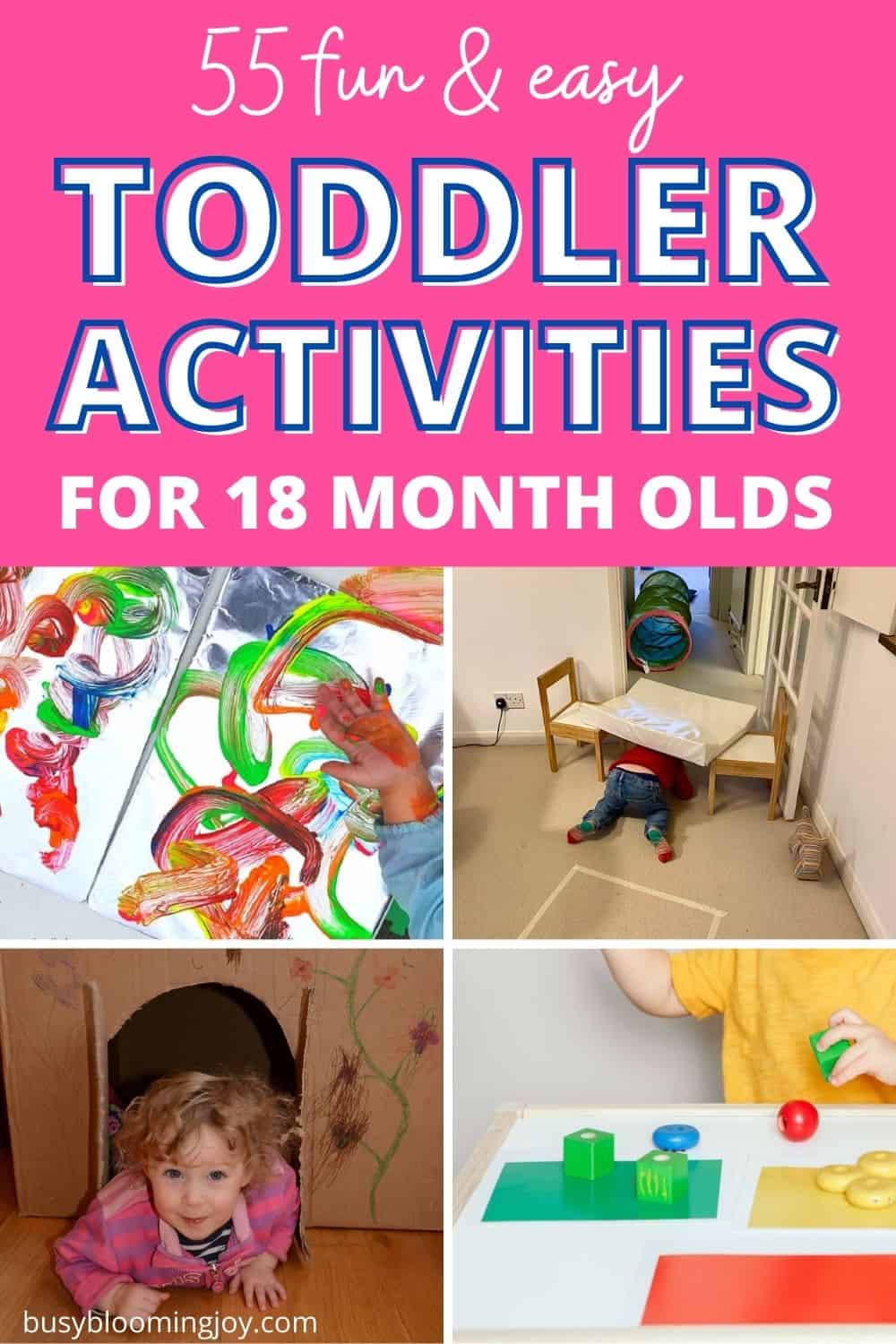My daughter was very gassy. She wasn’t happy for the first few months.
She was colicky, particularly in the afternoon, and cried a lot.
My daughter wasn’t a ‘happy spitter’. More like a desperately ‘unhappy vomiter’. She had bad reflux.
Together we learnt a few things; remedies to reduce the gassiness, remedies to tackle the crying and reflux remedies.
Since writing a bunch of posts on gassy babies, colicky babies and acid reflux in babies I’ve learnt even more.
In fact, if I’d known then what I know now I’m certain I could have helped her a lot better.
This is a roundup of ALL the remedies that could help, some of which I used, some I wish I’d known to try.
All of these remedies I’ve mentioned in other posts. So I’m not going to go into the ins and outs of why your baby is gassy, crying a lot or has reflux. You will find that info in the following posts and I will link to them in this post as appropriate.
Colic: what is it & is crying really inconsolable? Plus causes & remedies (yes, there ARE some)
Got a gassy baby? 16 Common causes & remedies to fix them for good
The scoop on REFLUX REMEDIES: natural remedies, over-the-counter ones & prescribed medications
So if some of the remedies seem a bit lacking in explanation, check the above for more info or look out for the links.
This post contains affiliate links. If you click on one and make a purchase, I may receive a commission at no extra cost to you.
Table of Contents
ToggleMinimizing gassiness is key to tackling abdominal pain, colic & reflux
In a nutshell, trapped wind distends the abdomen and causes pain. It also puts extra pressure on a weak esophageal sphincter (the valve that’s meant to keep stomach contents in the stomach) making spit-up and reflux more likely.
Although gas pains are not thought to be the underlying cause of excessive colic crying, gas pains are common with babies that cry a lot. And there are many factors that can make babies extra gassy:
- Not successfully releasing trapped wind and gas
- Baby swallowing extra air
- Behavioral factors causing baby to produce more gas
- Underlying gut issues causing baby to produce more gas
Plus, there are certain behaviors that put more pressure on the esophageal sphincter.
Most of these remedies tackle these causes in one way or another.
Then there are some over-the-counter remedies as well as medications, that mainly tackle the symptoms of pain.
Obviously, treating the cause is better than the symptoms. But it’s nice to know that there are options when all else fails!

Natural remedies that treat the cause of excess gassiness
These are easyish things you can start now!
TO REDUCE BABY SUCKING IN EXTRA AIR WHILE FEEDING
#1 Ensure a good latch
A poor latch on the nipple or a poor seal around the bottle teat means baby will suck in extra air when feeding. Seek help from a lactation consultant if you’re struggling or try different bottles/teats.
#2 Check for a tongue-tie
If baby has a tongue-tie getting a good latch is tough. Tongue-ties are not uncommon but can be easily resolved.
#3 Don’t let baby get overly hungry
Hungry babies tend to snatch at the breast or bottle and suck frantically before they’ve even got a good latch. So gulp down air in the process.
SPECIFICALLY, IF YOU’RE BREASTFEEDING
#4 Hand pump to get your milk flowing at the start of the feed if your milk let-down is too fast
A fast let-down can cause baby to cough and gulp down milk. Initiate it yourself, then start feeding baby.
#5 If you have a fast let-down try feeding in positions where baby has to suck milk uphill
Try sitting back in a recliner chair or lying down with your baby on top, tummy to tummy. So milk flow is against gravity.
Feeding baby while you’re lying down is another option. Baby has to suck milk across, rather than uphill. So although milk flow isn’t against gravity, but gravity isn’t making the situation worse and making milk flow faster!
SPECIFICALLY, IF YOU’RE BOTTLE FEEDING
It’s easy for babies fed by bottle to take in extra air but these remedies will help:
#6 Allow bubbles to settle before feeding
Otherwise baby will swallow these bubbles with the milk.
#7 Ensure the teat is always filled with milk
So hold the bottle at a steep enough angle, particularly at the end of the feed when the bottle is nearly empty.
#8 Experiment with different bottles
Some are specially designed to minimize air intake, like these Dr Brown’s ones which I used (far superior to the other anti-wind bottles)
#9 Check you’re using the right teat for your baby
Too fast a flow or too slow a flow can cause excess gas intake
TO HELP BABY RELEASE TRAPPED WIND
#10 Burp baby effectively
Use movements that put gentle pressure on the abdomen. Rub, don’t pat!
My favorite burping video:
#11 Burp baby A LOT. 10-20 times for every feed.
Yup, really that much. By the time your baby is 3 months old, you should be getting to 20-25 burps. That’s the total for 1 feed, so some burping at breaks during a feed, some after a feed.
(You can read more about optimum burping here.)
#12 Look for ‘wind cues’
There are several signs that baby has trapped wind, which show long before baby becomes uncomfortable. Heard of the ‘windy smile’? That’s a wind cue. More on the 6 ‘wind cues’ here.
TO PREVENT BABY PRODUCING EXTRA GAS
Not only do babies swallow air, but a number of things can cause baby to produce more gas internally… the following remedies tackle these.
#13 Ensure breast is empty before switching to the other side
This means baby will get the right balance of ‘foremilk’ and ‘hindmilk’. Too much foremilk can make baby extra gassy.
For more details on the above remedies, check the gassy baby post: Got a gassy baby? 16 Common causes & remedies to fix them for good
#14 If breastfeeding, remove dairy from your diet
Baby may be sensitive to their formula or something you are eating.
Diary is a common culprit, due to an allergy to the milk protein (cow’s milk protein allergy, or CMPA) and/or an intolerance to lactose in milk (transient lactose intolerance). For a remedy for transient lactose intolerance, see #27 remedy – in the ‘over-the-counter remedy section’.
Remove all sources of dairy from your diet for at least 3 weeks.
Do NOT replace cow’s milk with soy milk. Babies allergic to cow’s milk may also be allergic to soy (source).
Check out this post for more details: My baby is gassy. Is it a sensitivity to dairy or something else?
#15 If symptoms persist after removing dairy, try an elimination diet
Egg, soy, wheat, corn and peanuts are the next most likely culprits when it comes to food sensitivities. Try removing all of these for 2-3 weeks and then adding them back in one by one.
If still no luck you can try a more extensive elimination diet.
#16 If formula-feeding, try a hypo-allergenic or ‘EH’ formula
An ‘EH’ formula has had the milk proteins ‘extensively hydrolyzed’ (broken down). So they’re less likely to initiate the painful immune response (gas pains, itchiness, runny nose, cough).
Alimentum and Nutramigen are hypo-allergenic EH formulas.
In severe cases of CMPA, baby may still show symptoms when fed an EH formula. In this case try SMA Alfamino, which has no cow’s milk protein in it; it’s amino acid-based.
For more on food and dairy sensitivities, that link again: My baby is gassy. Is it a sensitivity to dairy or something else?
Natural remedies that treat the cause of gassiness & reflux
Ok, so gas itself makes spit-up and reflux more likely; the gas forcing that esophageal sphincter to open when it shouldn’t. If you’ve jumped here because you’re only interested in reflux remedies, head to the top mama!
In addition, there are factors that create even more pressure on the sphincter…
These remedies help with both.
TO PREVENT BABY PRODUCING EXTRA GAS & REDUCE PRESSURE ON SPHINCTER
#17 Avoid over-feeding by feeding too frequently
Feeding when there’s still undigested milk in the stomach pushes this milk into the gut prematurely. This milk is then fermented, rather than digested, producing extra gas.
Plus, the sheer volume of milk pushing up against that sphincter is sure to make it open….
Following a sleep and feeding schedule can with this.
#18 Avoid comfort feeding
Babies want to suck as a form of comfort. So it’s normal and natural to comfort feed. But if the source of the fussiness and discomfort is gas pains due to a large feed, then feeding more is only going to add to the problem.
Avoiding comfort feeding is even harder when you realize that ‘rooting to suck‘ is a cue not only for hunger but also for comfort.
But if you know baby has recently fed and is upset, the cue is more likely to be for comfort, not hunger.
Try a pacifier – baby can suck without getting extra milk.

#19 Feed baby in a semi-upright position
Ensure baby’s throat and mouth is higher than their stomach when feeding. Gas in the tummy will escape a little easier in these positions and this eases pressure on the esophageal sphincter.
If lying down (since I recommended this feeding position at #5) ensure baby is still lying on a little bit of an angle, by supporting their head with your arm, for example.
Natural remedies that specifically treat the cause of reflux
So these ones might help a particularly gassy baby but really they’re more for babies prone to excessive spit-up and reflux; they aim to reduce excess pressure on the esophageal sphincter.
For an in-depth guide to acid reflux, which includes more detail on the following remedies check this post: The scoop on REFLUX REMEDIES: natural remedies, over-the-counter ones & prescribed medications
REMEDIES TO REDUCE PRESSURE ON SPHINCTER
#20 Keep baby semi-upright for at least 30 minutes after a feed
This helps the milk stay down! Plus helps any further trapped wind and gas to escape.
Try baby wearing, a baby bouncer suitable for tiny babies or an infant seat when baby is a bit older.
(I loved this baby bouncer from Tiny Love. It has all the bells and whistles (literally) but most importantly is super supporting when baby is small and has a soothing vibrate function for gassy babies.)
If you’re looking for an infant seat, I used this Bumbo in the photo below. (It comes with play table attached is light, portable and great for when you start weaning too.)

#21 Sleep baby on a slight angle
Also helps keep the milk down. Raise the head end of baby’s cot by a few inches using a few books (not so steep that baby can roll down or anything!)
#22 Try a sleep nest
A sleep nest is an ergonomically shaped bed made from a firm material, allowing baby to lie in a fetal-like position but still on their back, at a very slight angle.
A ‘sleep nest’ is different to a ‘sleep positioner’. Those are not recommended under safe sleep guidelines.
This can help to keep milk down but also keep gassy/reflux babies a lot more comfortable for any periods when they’re lying down as well as when they’re sleeping.
My daughter loved this Cocoonababy baby nest and it helped her sleep no end. It’s also extremely portable and great for travel away from home when you’re desperate to put baby down and there’s nowhere safe from falling other than a manky looking floor.
Please investigate any sleep products very carefully and ensure they meet the safe sleep guidelines. The Lullaby Trust advises against sleep positioners or wedges and recommends that babies sleep “on a firm flat mattress, in a clear cot free of pillows, toys, bumpers and sleep positioners.” Check out their safe sleep product checklist for more details.

#23 Split feeds
Split a feed into two smaller feeds, with a decent (half hour) break in the middle to let that milk digest, settle and ensure the stomach doesn’t become too full. This also allows plenty to time to burp, burp, burp…
#24 Feed smaller feeds more frequently
Instead of splitting feeds you could just choose to feed smaller feeds throughout the day, more frequently. Again, this means baby’s stomach shouldn’t become overfull and overflow.
If you go this route be sure to allow baby adequate time to digest milk in between feeds to avoid over-feeding…
(I went with the split feed option because I was following this sleep and feeding schedule.)
Natural remedies to SOOTHE your gassy/colicky/reflux baby
These are to help with discomfort, rather than fix the cause, but may also bring up wind in the process, which will help further.
HELP THE DISCOMFORT OF GAS PAINS & BRING WIND UP
#25 ‘Colic carry. or ‘tiger in the tree’
The ‘colic carry’ or ‘tiger in the tree’ – lie baby over your forearm, with her head towards your elbow and your hand supporting her crotch.
#26 Tummy time
Put baby on front and allow her to push up on her hands and explore. Soothing your gassy baby is just one of the many benefits – a few minutes of tummy time is recommended for babies every day from just a few days old.
#27 Baby bicycles
With baby lying on her back, lift the legs and pedal them
#28 Baby massage
This video has a great demonstration of 6 different techniques:
Natural remedies to CALM fussy babies & help colic crying
By definition, a baby has colic if they cry excessively (3+ hours a day, 3+ times a week for 3 consecutive weeks), crying is inconsolable and there’s no other cause (ie no health issues or obvious reason for the crying).
So if this is the case, there are few remedies that will help.
However, there is some thought that some babies are more sensitive to the world around them and less able to calm down once distressed. And this can predispose them to excessive ‘colic crying’.
Hence, remedy #29 might work for a colic baby.
Check out the full colic post here for more details: Colic: what is it & is crying really inconsolable? Plus causes & remedies (yes, there ARE some)
All of these remedies should help any baby who cries and fusses a more moderate amount.
FOR BABIES WHO CRY EXCESSIVELY & DIAGNOSED WITH COLIC
#29 Minimize stimulation
This study noted less crying in babies diagnosed with colic (ie cried excessively with no other cause) when stimulation was reduced. That means taking baby away from the hustle and bustle of lots of everyday situations.
FOR BABIES WHO ARE FUSSY & CRY (BUT DON’T HAVE ‘COLIC’)
#29 Babywear
There’s now scientific evidence that supports babywearing; babies carried for a few hours every day have been shown to cry less.

#30 Any form of gentle movement
Rocking, dancing, swaying, walking up and down the stairs… a trip in the car. All of these movements are much like those that baby would have experienced in the womb.
For more ideas, I love this article from Dr Sears with 8 dance steps to soothe your fussy baby!
#31 White noise
Again, this mimics the noisy gurglings of the mothers womb… Many moms swear by white noise but I didn’t try this so I can’t recommend a particular white noise machine but there are plenty to choose from.
I hate white noise and preferred real music! (I used this baby monitor with light show and music with my babies for wind-down and naps).
#32 Pacifier
As mentioned at #18 ‘rooting to suck’ is a cue not only for hunger but also for comfort. So offering a pacifier can really help baby calm down.
Natural remedies to stop late afternoon fussiness aka the ‘Witching Hour’
Overstimulation and tiredness pretty much sums up the causes of the witching hour, so these remedies are focussed around these.
TO AVOID OVERSTIMULATION & OVERTIREDNESS
#33 Ensure baby takes decent naps in the day
Babies need a lot of sleep when they’re tiny; at least 3 daytime naps in the first few weeks.
For some guidance on how much sleep babies need day and nap check out the baby sleep charts in this post: Baffled by how much sleep baby needs? Baby sleep chart to the rescue!
Ideally, you want baby to nap for long stretches of 1.5 to 2 hours to get some good restorative and developmental sleep.
Check out these posts here for tips on getting baby to develop healthy sleep habits (and through the night):
How to get your baby to sleep through the night: 10 steps for an awesome nights sleep, no cry-it-out
Newborn sleep patterns: decoded and demystified for healthy sleep habits

#26 Don’t have baby awake too long in between naps
Following on from the last, ensure baby is not awake too long in between naps. The baby sleep charts have guidance on this too.
#28 Allow enough time for ‘wind down’
Start winding baby down before overtiredness and meltdown is reached! Allow 15-20 minutes of wind-down before a nap.
This newborn sleep and feeding schedule outlines feed times, nap times as well as ‘wind down’ times.
#29 Put baby to bed early after a busy day
Watch out for tiredness cues and put baby bed early if you see a meltdown on the horizon.
Over-the-counter remedies that treat gassiness & reflux
#30 & #31 are remedies for common underlying gut issues in babies that cause gas: an imbalance of gut bacteria and a form of temporary lactose intolerance, called transient lactase deficiency. #32 & #33 are to soothe excess gassiness and discomfort and #34 is specifically for reflux.
TO HELP WITH AN IMBALANCE OF GUT BACTERIA
#30 Infant-formulated probiotics
After much debate, The American Academy of Pediatrics recently announced that probiotics are effective in reducing the crying times in gassy babies!
This is because many babies seem to have in imbalance of good bacteria (probiotics) and bad bacteria, which means more gas pains, fussing and even reflux.
Look for probiotics which contain L. reuteri DSM 17938, such as BioGaia Probiotic Drops.
#31 Probiotic fortified formula
I’ve included this just for completeness. There are some available, but the concentration and effectiveness of the active ingredient (the probiotic) is questionable. Plus, there’s no scientific backing for them.
TO HELP WITH TRANSIENT LACTASE DEFICIENCY
#32 Infant-formulated Lactase drops
This is when baby doesn’t have enough lactase to break down all the lactose in the milk they ingest. Undigested lactose is fermented, producing gas. This is different to an allergy to cow’s milk protein! Transient lactose intolerance is temporary and babies quickly grow out of it.
Even if you’re formula feeding, use lactase drops, NOT a lactose-free formula. Lactose-free formula is only necessary in the extremely rare cases of congenital lactose intolerance. It’s nutritionally inadequate so use needs to be supported by professional nutritional advice.
Check out this post for more details: My baby is gassy. Is it a sensitivity to dairy or something else?
TO HELP BABY PASS TRAPPED WIND
#33 Newborn gas drops (e.g. Mylicon)
Gas drops containing simethicone are meant to break down large gas bubbles into smaller ones, making them easier to pass. Nothing scientific to support this claim but many moms swear by them.
(I used them by the bucket load but I’m not all that sure they were effective.)
TO HELP WITH DIGESTIVE DISCOMFORT
#34 Gripe water
Gripe water is a herbal remedy meant to help with digestion in gassy babies. Again, no evidence it does anything but could be well worth a go.
If want to try it, try Colic Calm. Unlike most gripe waters, that one is free from alcohol, sodium bicarbonate, sugar, soy, wheat and other potential allergens and is regulated by the FDA.
TO HELP PREVENT REFLUX
#35 Thickened formula
A thickened formula is heavier and therefore, harder to spit up.
My friend had huge success with SMA Anti-Reflux formula with her reflux baby. I tried it with my daughter and had no joy but I’m now sure that was due to other issues, rather than the formula, so it may be worth a try.

Prescription acid reflux medicines for babies
These mainly treat the painful acid burn experienced in acid reflux. They won’t stop the amount of spit up and they do nothing to treat the cause of the reflux itself. So should be treated as a last resort.
Check out the reflux post for more details: Help your baby fight acid reflux: 16 remedies to fix the cause (plus some to treat the pain)
TO NEUTRALISE STOMACH ACID
#36 Antacids
e.g. Maalox, Mylanta, Rolaids, Alka-Seltzer
Many of these are available over the counter for children over a year old but can be used for small babies under medical supervision.
TO REDUCE THE PRODUCTION OF STOMACH ACID
Stomach acid plays an important role in digestion plus it acts as the first line of defence against everything we swallow. So using remedies that reduce baby’s stomach acid shouldn’t be taken lightly!
#37 H2 blockers
e.g. Tagamet, Zantac, Pepcid, Axid
#38 Proton Pump Inhibitors
e.g. Nexium, Prilosec, Prevacid, AcipHex, Protonix
TO HELP PREVENT MILK FROM BEING REGURGITATED
#39 Mucosal surface barriers
e.g. Baby Gaviscon
This is meant to create a layer over the stomach contents and reduce reflux.
So far, little evidence that Baby Gaviscon does what it’s meant to (in this study, reflux was not reduced or eliminated).
Baby Gaviscon or Gavison Infant is another remedy available over the counter for children over a year old. Seek professional medical advice if you wish to try it with your baby.
In summary
Hopefully, this list has given you a whole heap of ideas on how to help your fussy, gassy, colicky, reflux baby!
As you can see there are a huge amount of natural remedies you can start immediately that should help.
Next steps – probiotics! There’s real scientific evidence that these can help.
Plus some other harmless over-the-counter remedies worth trying.
Finally, if none of these have helped and your baby has bad reflux, there are medications that will help with the pain.
For more details on gassy babies, colic and acid reflux, here are the full posts:
Got a gassy baby? 16 Common causes & remedies to fix them for good
Colic: what is it & is crying really inconsolable? Plus causes & remedies (yes, there ARE some)
The scoop on REFLUX REMEDIES: natural remedies, over-the-counter ones & prescribed medications
My baby is gassy. Is it a sensitivity to dairy or something else?
Good luck and let me know how you get on!
Are there any particular remedies that helped your gassy, fussy, colicky baby? Let me know in the comments below.













